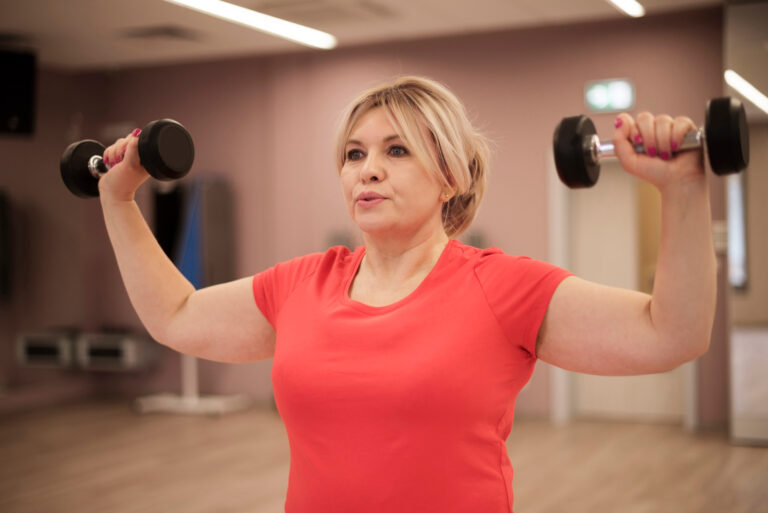Top Strategies: How to Maintain Independence and Age in Place for Longer
Understanding the Importance of Independence and Aging in Place
Understanding the Importance of Independence and Aging in Place
As we grow older, the concept of independence becomes more significant. Many individuals prefer to age in place, which means living independently in their own homes for as long as possible. This desire is not only about familiarity and comfort but also about maintaining a sense of autonomy and control over one’s life.
Aging in place allows individuals to remain in familiar surroundings, surrounded by cherished memories and possessions. It promotes emotional well-being and a sense of security that can positively impact overall health and happiness.
Moreover, staying at home longer can often be more cost-effective than moving to assisted living facilities or nursing homes. By making necessary modifications to the home environment, such as installing grab bars, ramps, or stair lifts, older adults can continue to live comfortably and safely in their own homes.
Independence plays a crucial role in promoting healthy aging. It encourages individuals to stay active both physically and mentally, fostering a sense of purpose and self-worth. By maintaining independence, older adults can continue to engage with their communities, pursue hobbies they enjoy, and make decisions that align with their preferences and values.
In conclusion, understanding the importance of independence and aging in place is essential for supporting the well-being of older adults. By advocating for independent living options and creating age-friendly environments, we can empower seniors to age gracefully while maintaining their dignity and autonomy.
Creating a Safe and Accessible Home Environment for Long-Term Living
As we age, it becomes increasingly important to ensure that our living spaces are safe and accessible to support independent living. Making thoughtful home modifications can significantly improve the quality of life for elderly individuals and those with mobility challenges.
One of the key aspects of creating an age-friendly home is to consider accessibility in every corner. Simple modifications such as installing grab bars in bathrooms, ramps at entrances, and lever-style door handles can make a big difference in promoting independence and safety.
In addition to physical modifications, incorporating smart technologies into the home can also enhance accessibility. From voice-activated assistants to smart lighting systems, these innovations can help individuals navigate their homes more comfortably and efficiently.
Investing in independent living aids such as shower chairs, raised toilet seats, and stairlifts can further support long-term living at home. These aids not only improve safety but also provide peace of mind for both residents and their families.
By prioritising accessible home design and making age-friendly improvements, individuals can enjoy a comfortable and secure living environment that promotes independence and well-being for years to come.
The Role of Technology: Smart Solutions for Independent Living at Home
In today’s fast-paced world, technology plays a crucial role in enhancing the quality of life for the elderly population, enabling them to maintain their independence and stay connected with their loved ones. The rise of assistive technology and smart home devices has revolutionised the way seniors experience daily living at home.
Smart solutions such as remote monitoring systems provide peace of mind to both seniors and their families by allowing for real-time tracking of health metrics and ensuring immediate assistance in case of emergencies. These technologies not only promote safety but also empower older individuals to age in place comfortably.
The integration of smart home devices tailored for seniors offers convenience and accessibility like never before. From voice-activated assistants to automated medication reminders, these innovations simplify daily tasks and enhance overall well-being. By embracing technology designed specifically for the ageing population, seniors can enjoy a sense of autonomy while receiving necessary support.
As we navigate towards an increasingly digital age, it is evident that assistive technology is paving the way for a more inclusive society where independent living is made more achievable for seniors. By leveraging these smart solutions, older adults can lead fulfilling lives while staying connected to a network of care and support.
Maintaining Physical and Mental Wellbeing to Support Independent Living
Maintaining physical and mental wellbeing is crucial for supporting independent living, especially as we age. By incorporating healthy ageing tips and focusing on mental health in old age, seniors can enhance their quality of life and overall well-being.
Engaging in regular physical activities is key to promoting physical health among seniors. Simple exercises such as walking, swimming, or yoga can help improve strength, flexibility, and balance. These activities not only benefit the body but also contribute to a positive mindset and emotional well-being.
In addition to staying physically active, it is essential for seniors to prioritise their mental health. Practising mindfulness techniques, such as meditation or deep breathing exercises, can help reduce stress and anxiety levels. Maintaining social connections with friends and family members also plays a significant role in supporting emotional well-being.
By combining physical activities with strategies that promote emotional well-being, seniors can enjoy a more fulfilling and independent lifestyle as they age. Taking care of both the body and mind is essential for maintaining overall wellness in later years.
Cultivating Social Connections and Community Support Networks as You Age in Place
As we age, cultivating social connections and building community support networks become critical components of successfully aging in place. Studies have shown that maintaining strong social ties can increase longevity and overall well-being in older adults. Engaging with friends, family, and neighbours not only provides emotional support but also fosters a sense of belonging and purpose.
Creating meaningful relationships within your community can help combat feelings of isolation and loneliness that often accompany aging. Whether it’s joining a local club or volunteer organization, participating in group activities, or simply reaching out to neighbours for a chat, these interactions can enrich your life and provide valuable support as you navigate the challenges of aging in place. Building a supportive network around you ensures that you have access to resources, assistance, and companionship when needed most. By investing time and effort into nurturing these social connections, you are not only enhancing your quality of life but also creating a strong foundation for independent living as you age gracefully in your own home.
Societal support systems for the elderly play a crucial role in ensuring their well-being and quality of life as they age. From government programs to community organizations, a range of services are available to aid with healthcare, transportation, and social activities. These support systems not only help seniors maintain their independence but also foster a sense of connection and belonging in their later years.
Community engagement activities for seniors offer opportunities for older adults to stay active and engaged with others in meaningful ways. Whether it’s participating in exercise classes, volunteering at local organizations, or attending social events, these activities can help combat loneliness and isolation that often accompany old age. By staying involved in the community, seniors can continue to develop new relationships and interests while maintaining a sense of purpose and fulfilment.
As people age, social circles may naturally shrink due to various factors such as retirement, mobility limitations, or losing friends and family members. However, building new social connections is essential for mental health and overall well-being in old age. Joining clubs or groups tailored to senior interests can help expand one’s social circle and provide opportunities for meaningful interactions with like-minded individuals who share similar life experiences. Keeping an active social life can contribute significantly to a fulfilling and enjoyable old age experience.
Empower Yourself to Stay Independent and Thrive at Home as You Grow Older
As we age, the desire to remain independent and thrive in our own homes becomes increasingly important. One key strategy to achieve this is fostering a sense of community and social connection. Loneliness can be a significant barrier to independence, so staying engaged with friends, family, and community activities can greatly enhance our well-being as we grow older.
Another crucial aspect is adapting our living space to ensure safety and convenience. This may involve making modifications like installing grab bars in bathrooms or improving lighting for better visibility. By taking proactive steps to create an environment that supports our needs as we age, we can promote independence and continue living comfortably in our homes for years to come. Remember, it’s essential to empower yourself by being proactive about your health, staying engaged socially, and making necessary modifications to your surroundings – all keys to thriving independently as you age in place.







